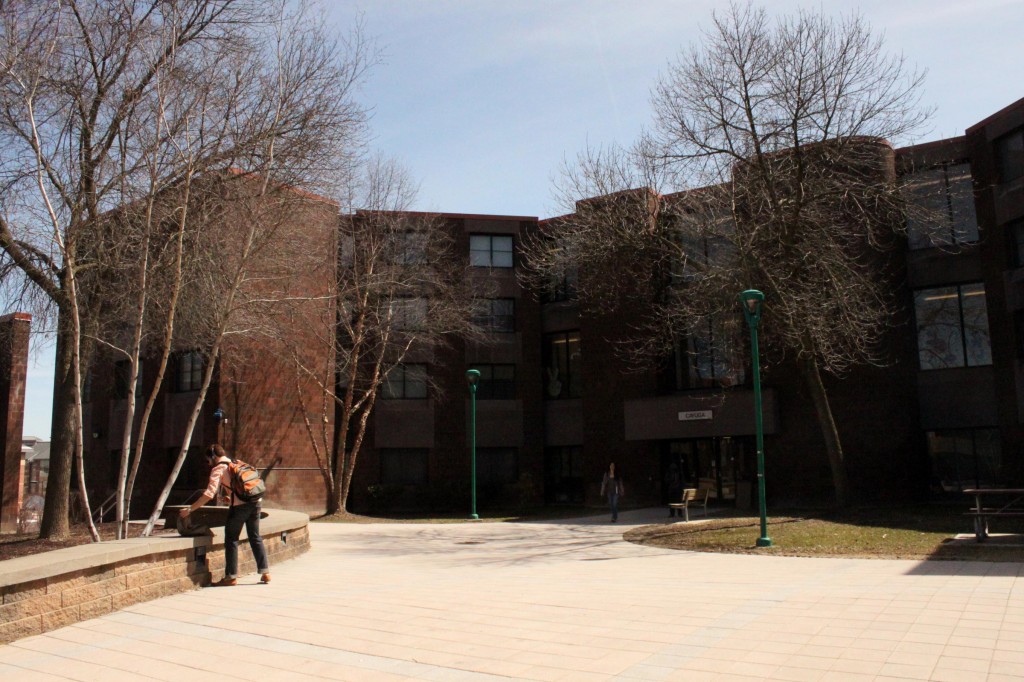
As long as manmade structures stand, architecture is humanity’s rendition of triumph over the natural land. Rarely does nature offer to us the planes and geometric shapes that mankind produces.
And then there are a few great buildings that lead us to believe otherwise. In a nook on Binghamton University’s campus sits a cherished community, College-in-the-Woods. At first glimpse, the set of six buildings is just a concrete glob of blocks obstructing a wooden haven. But time and memories tell that such structures paradoxically both subdue and complement the surrounding woods. CIW epitomizes the architectural ability for buildings to be one with the land yet satisfies their function, the home of hundreds of students.
Amidst a deciduous forest, the conglomerate of buildings rests upon a hill. Curvaceous and sloping, the landscape is a stark contrast to the buildings, a series of planes and rectangular prisms. These planes are further geometrically divided by rectangular bricks on the buildings and squares on the pavement floor. Short, winding ledges arise from the concrete and twirl their way around the bottom terrace. On warm, sunny days, they offer students ideal seating for basking in the sun, the shade or, as the sun crosses the sky, a combination of the two. During the night, lights on the side of the ledges illuminate the walkway, supplementing the workings of the stars.
Perched among a series of terraces are the five residential halls. Ordinarily, a landing suggests a single, ground entrance for a building. The terraces in CIW, however, allow for entrances of the buildings at multiple ground levels. This innovative approach to building allows the community to embody an aspect of the land instead of competing with it. Like the hill itself, the buildings rise upward to the sky.
Adjacent to the buildings are plots of land with grass, shrubs and trees peeping out. Similar to the buildings, these plots are tamed, groomed and well-kept. Each wood chip is meticulously placed in its rightful spot separate from the concrete pathways. The plants are a reminder of the symbiosis between the natural world and mankind, like the stability depicted by yin and yang.
During the course of the day, life bustles in the woods. The sun rises, birds chirp and students march to classes. As the sun climbs, the shadows cast on the buildings by the trees stretch across those blocklike planes. Food is dropped, smiles are exchanged and paces quicken. The night encroaches, often bringing about the noisiest time of day. And through it all, the CIW ecosystems brings out the best in each counterpart.
As the weather gets warmer, residents will find themselves creeping out of their boxy rooms and into the delightful encompassment of CIW. Footballs will be thrown, bubbles will be blown, skateboards will be rolled, canvases will be painted and hula hoops will be spun. And among the industriousness of a rising generation, the buildings will stand, marking their partnership with a beloved home to many.


